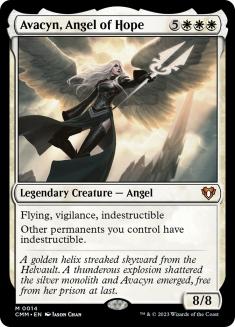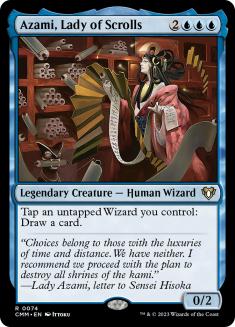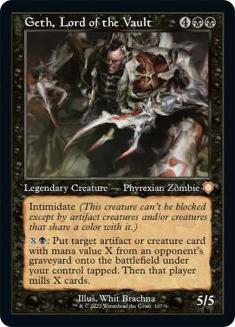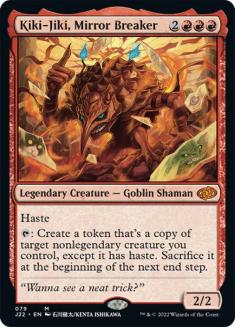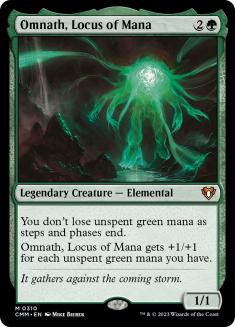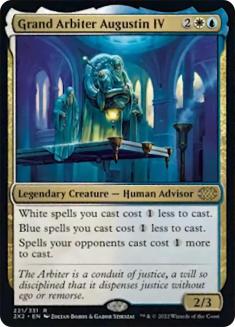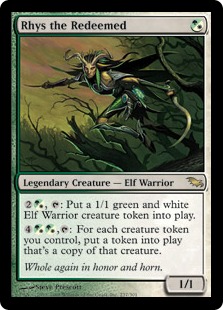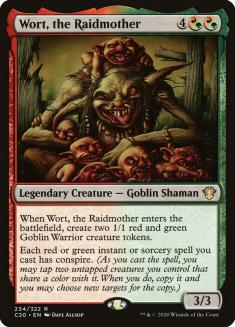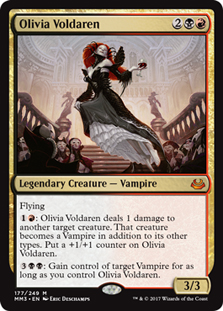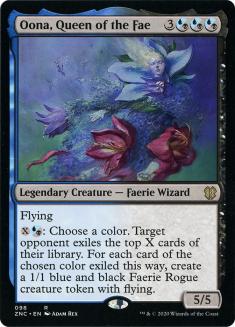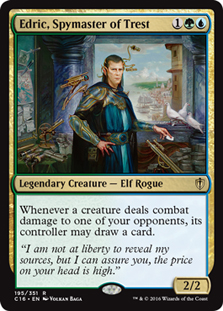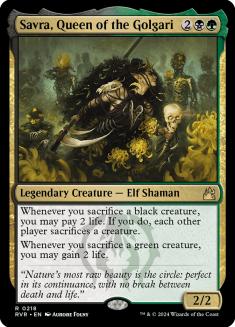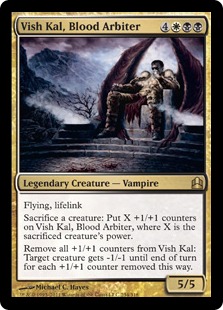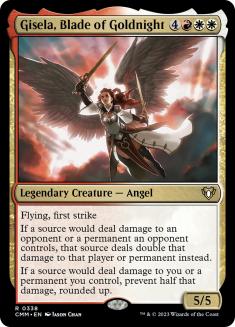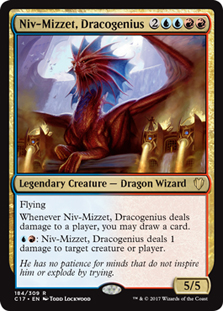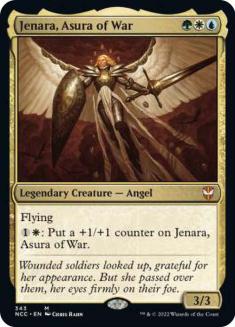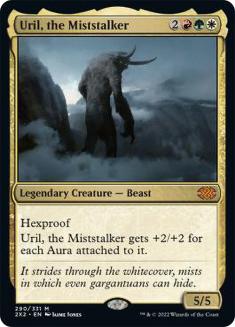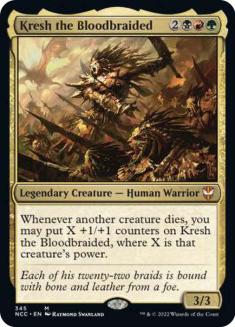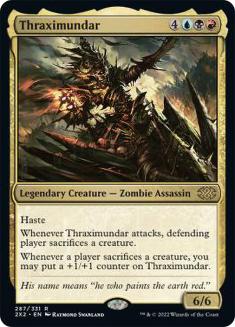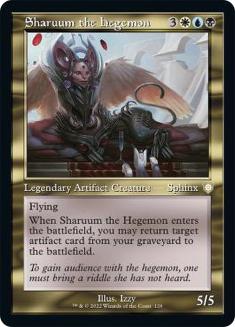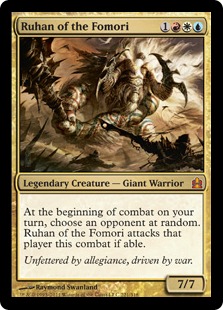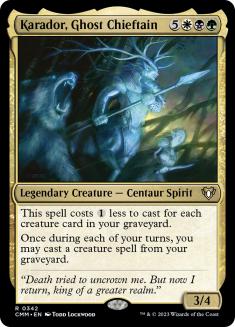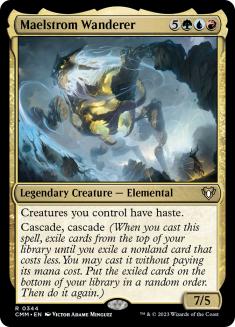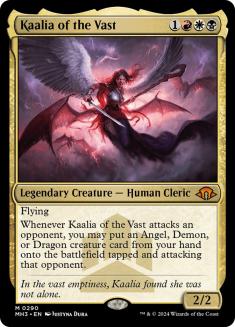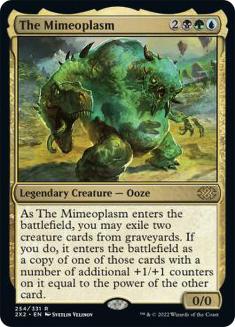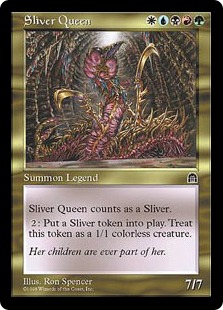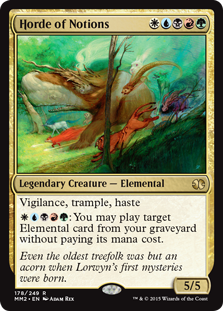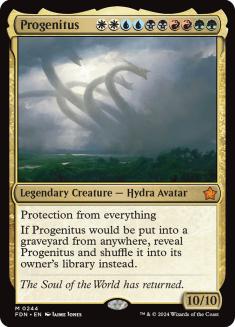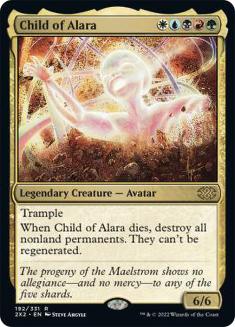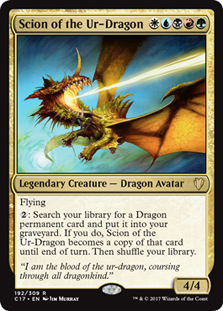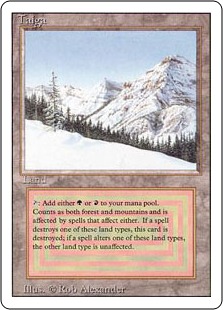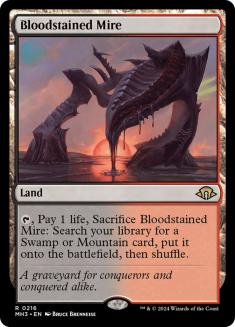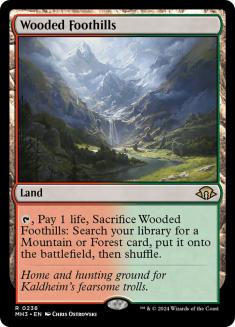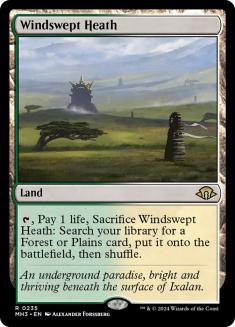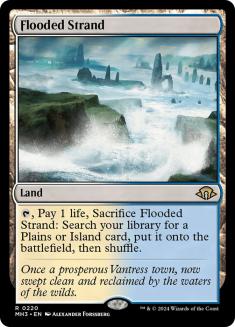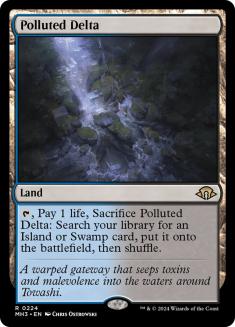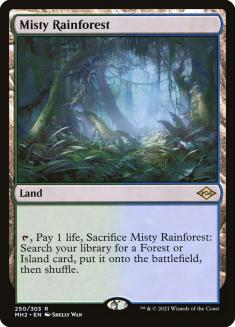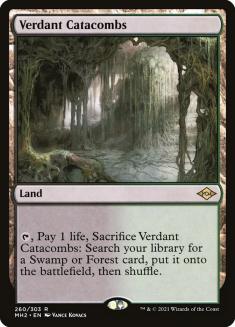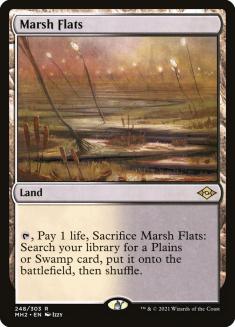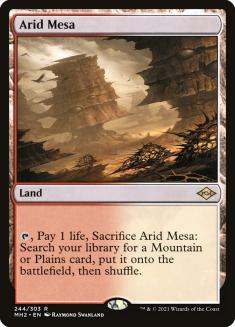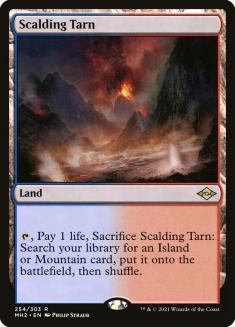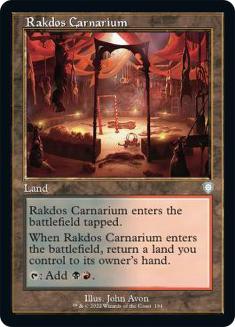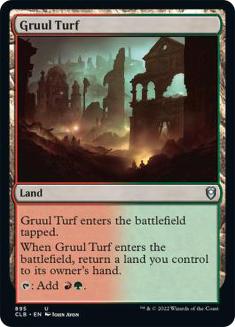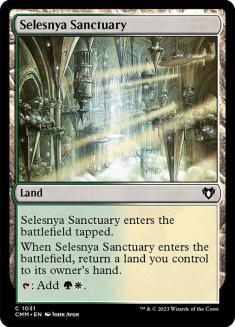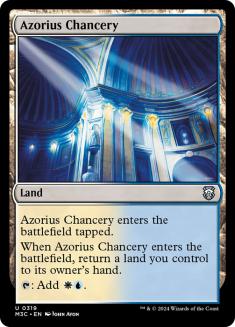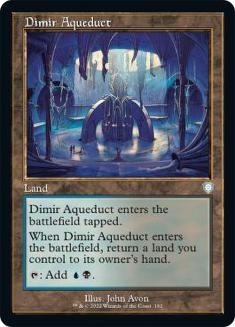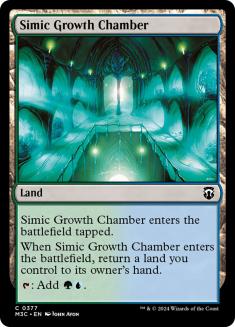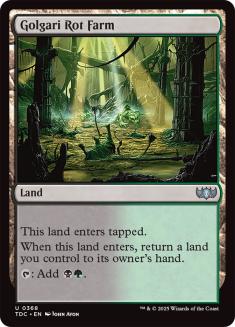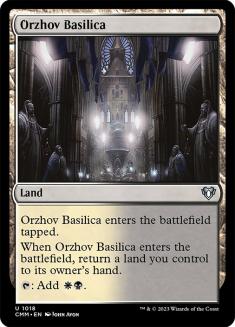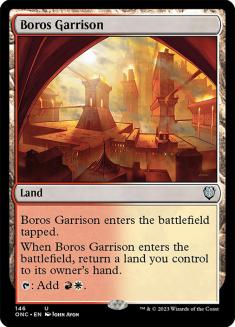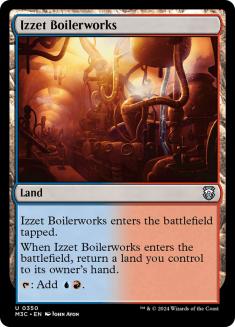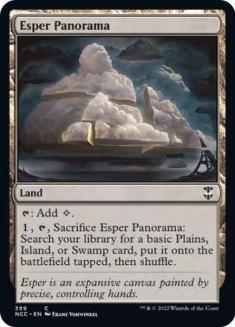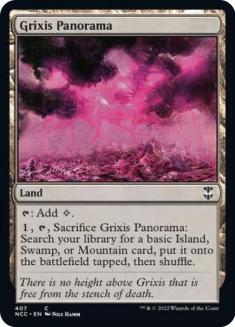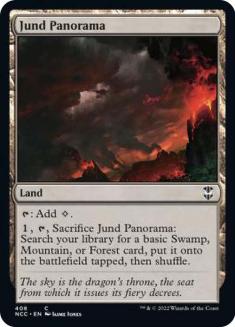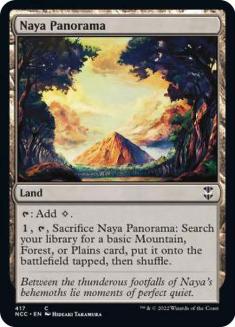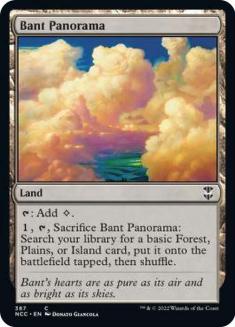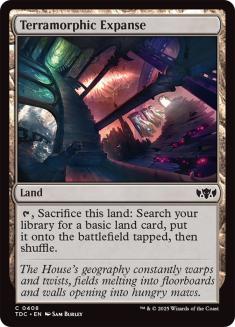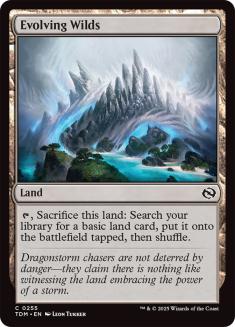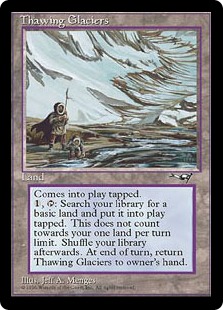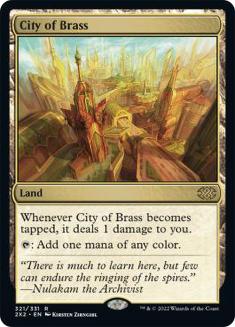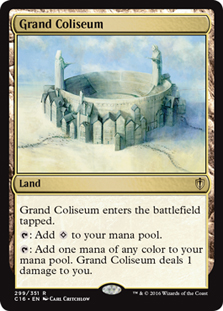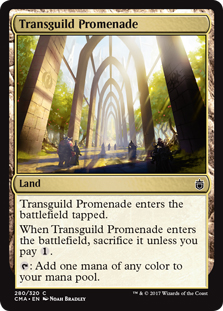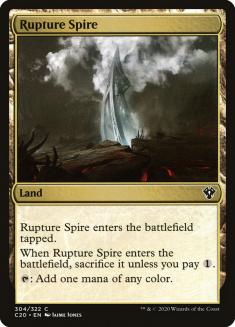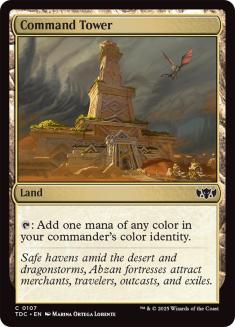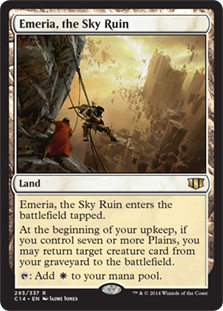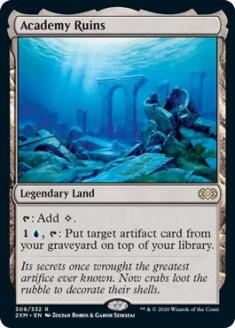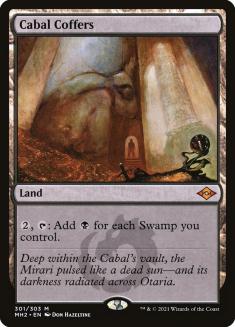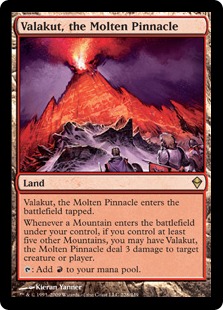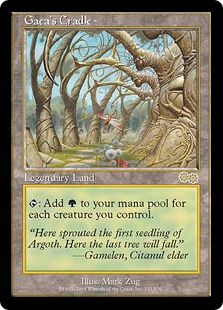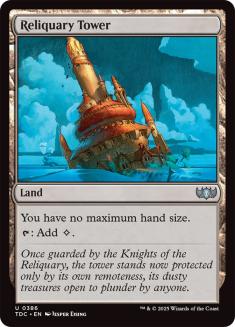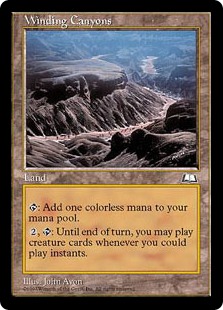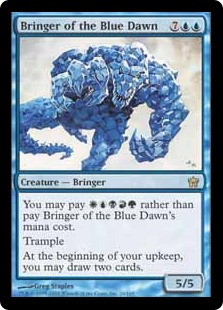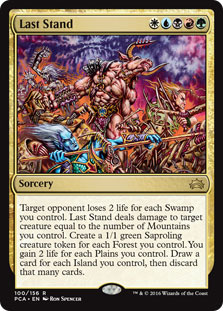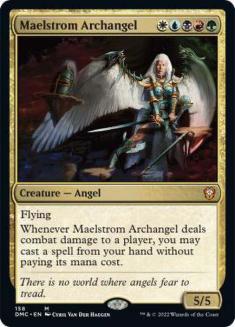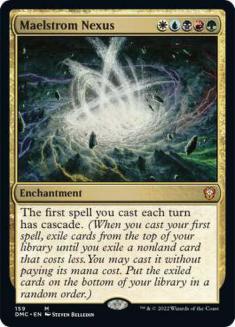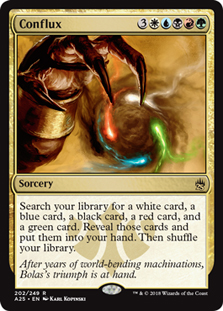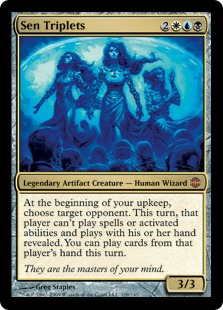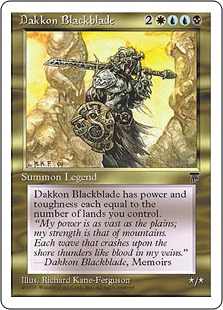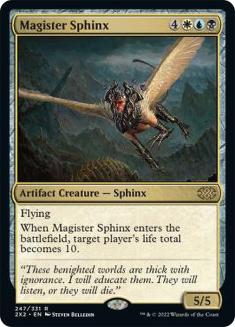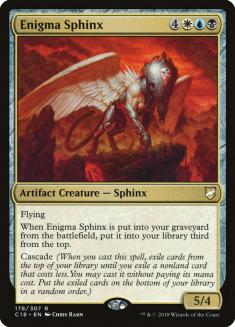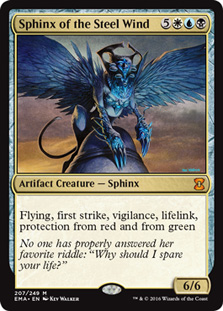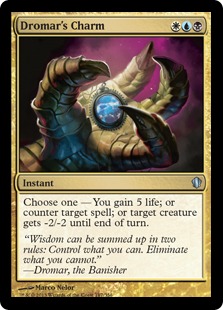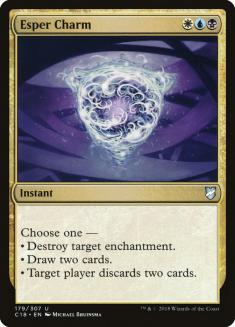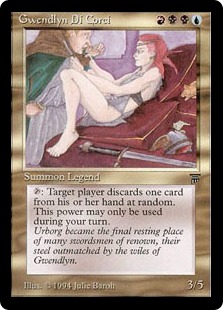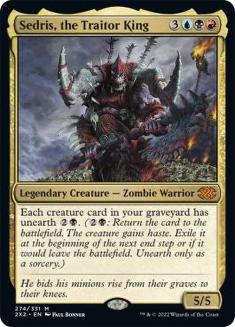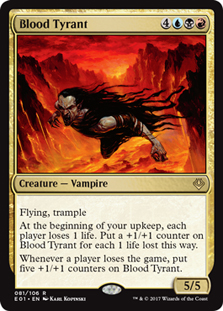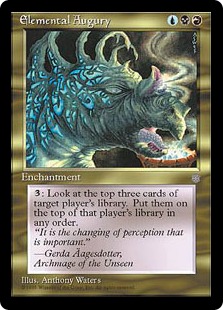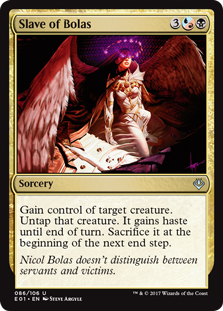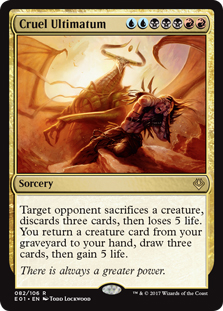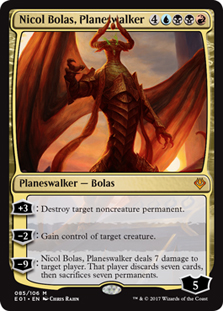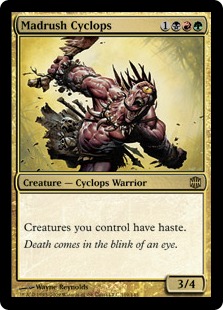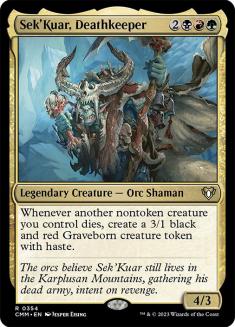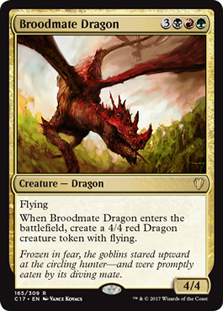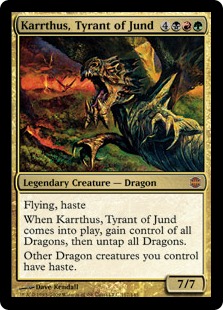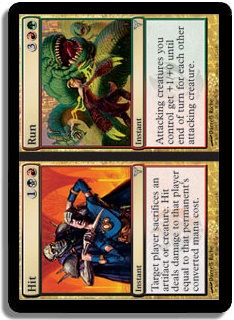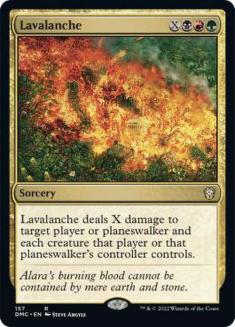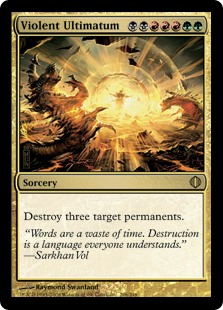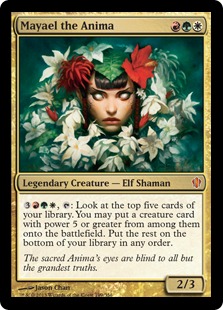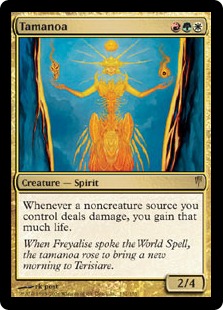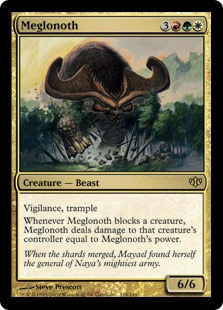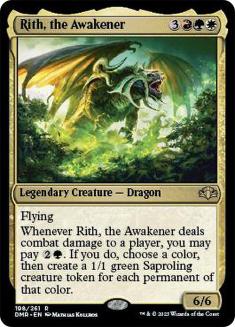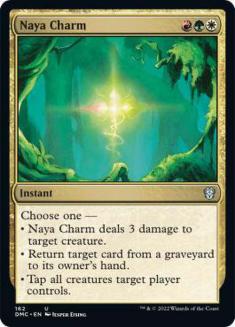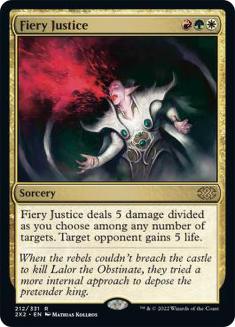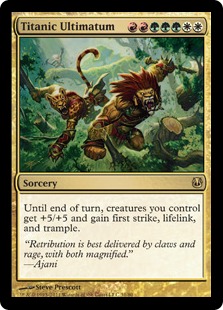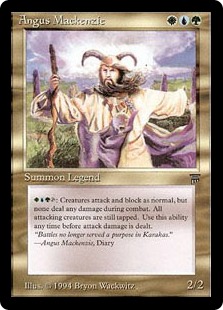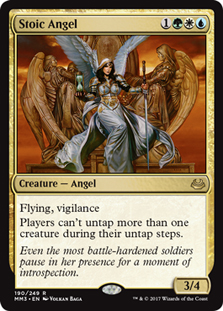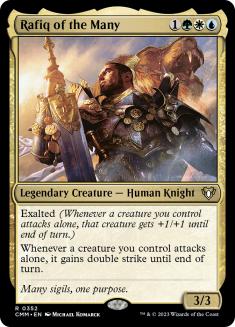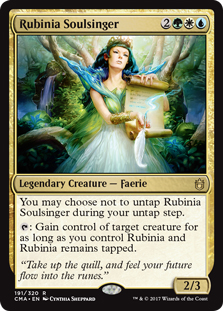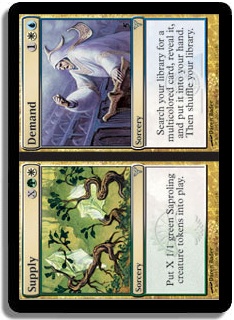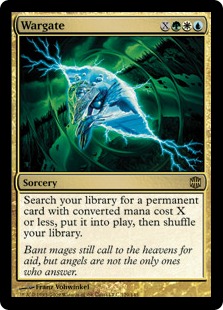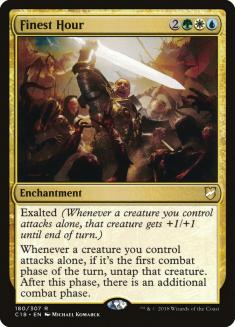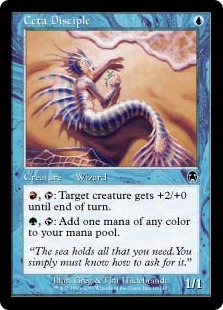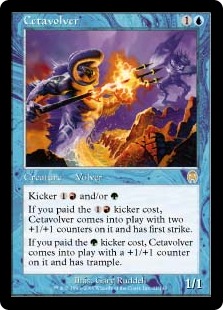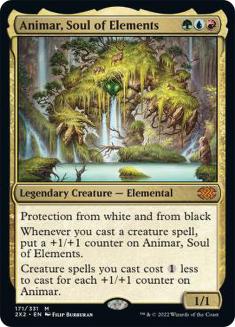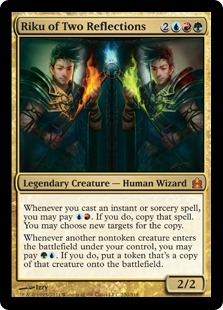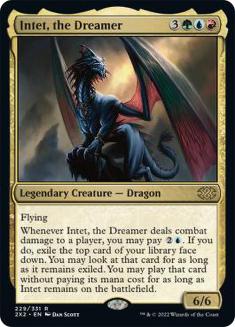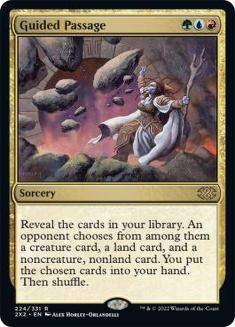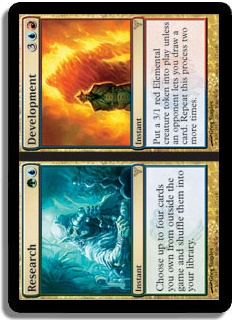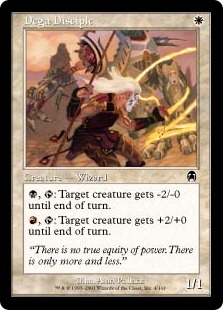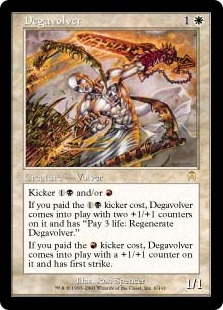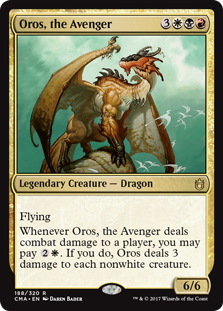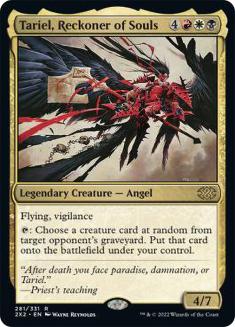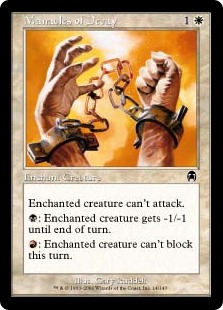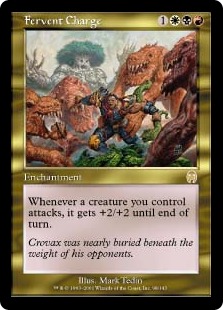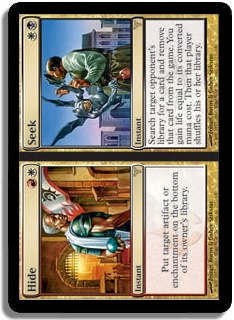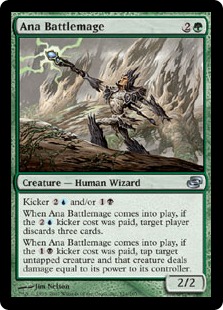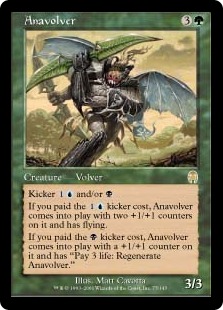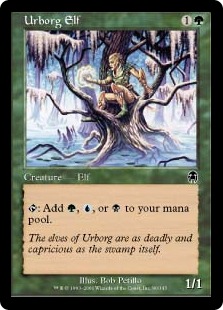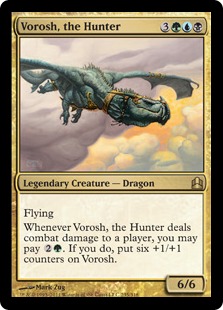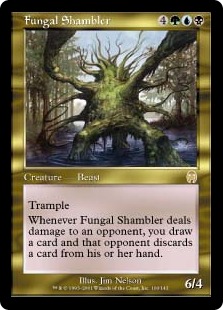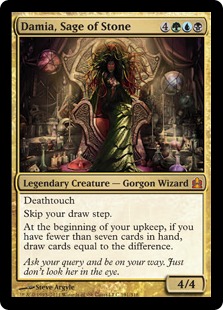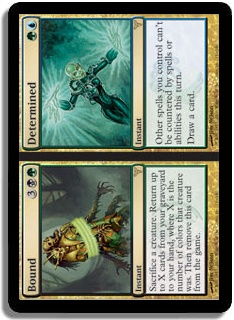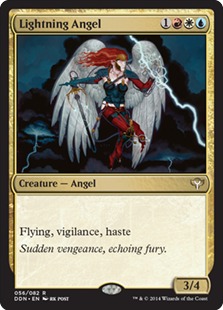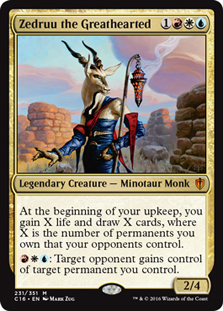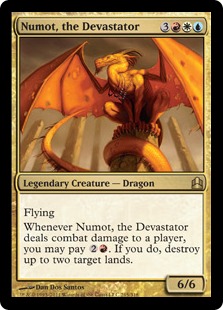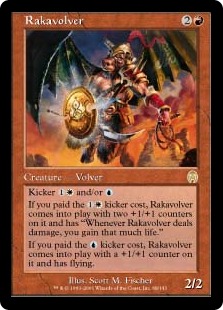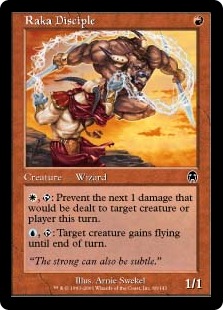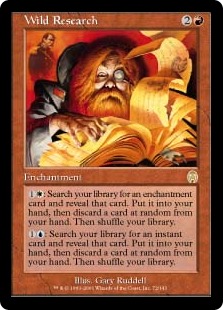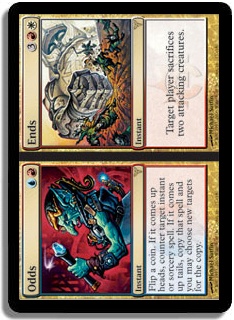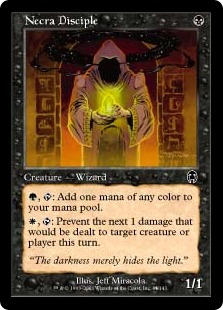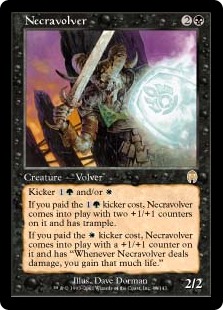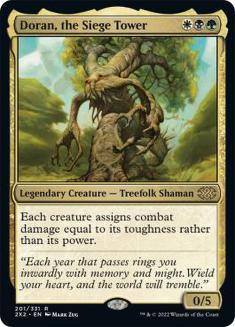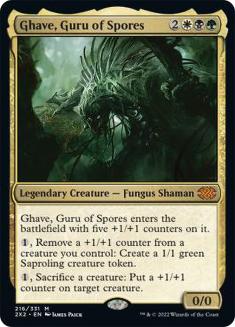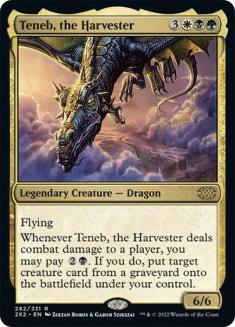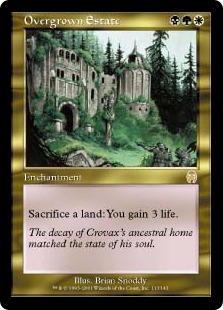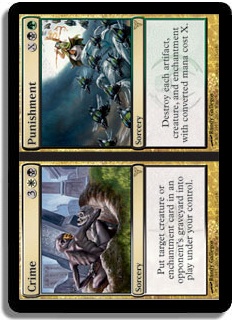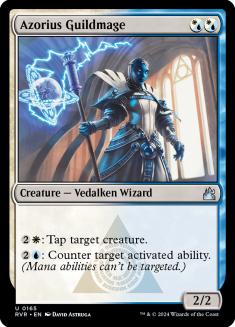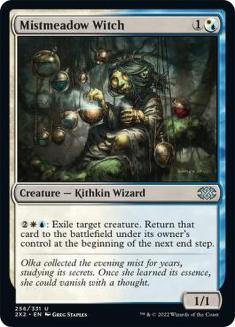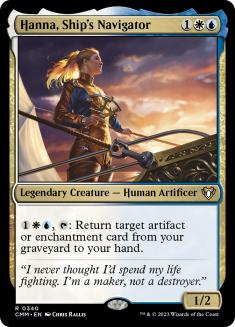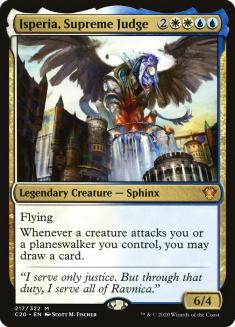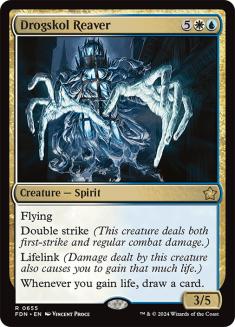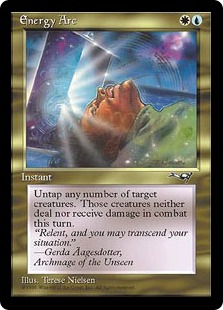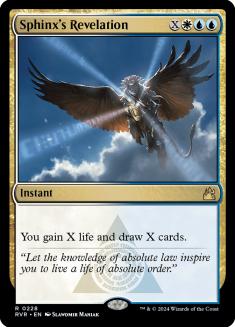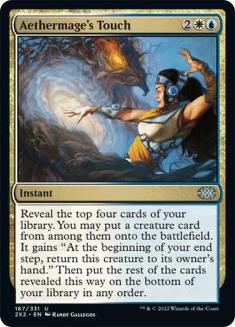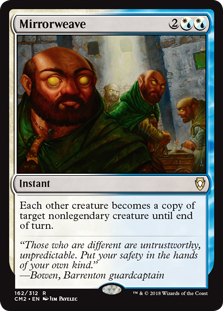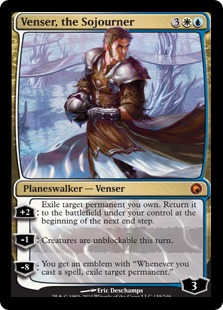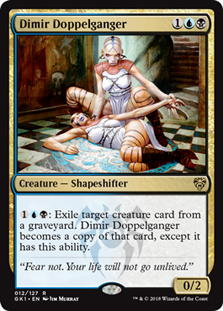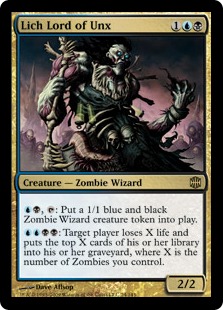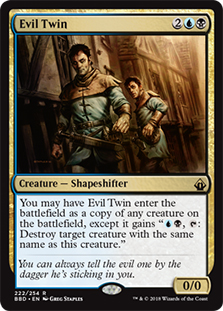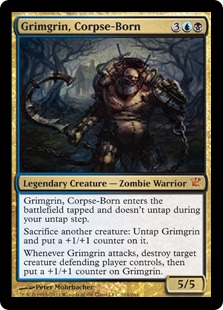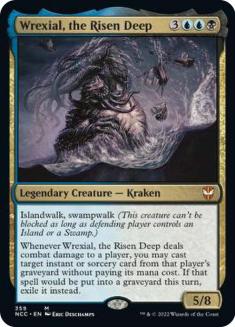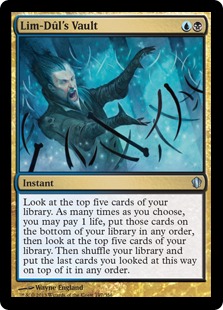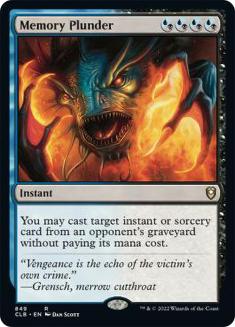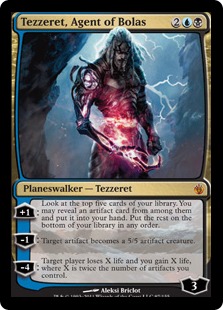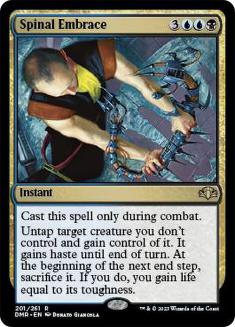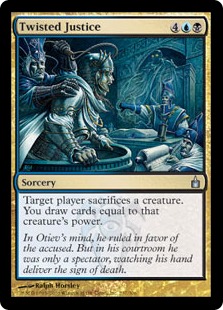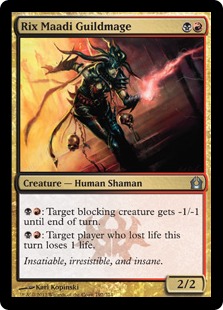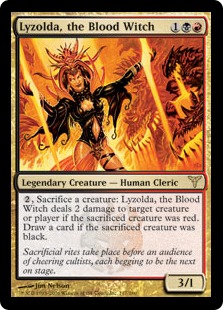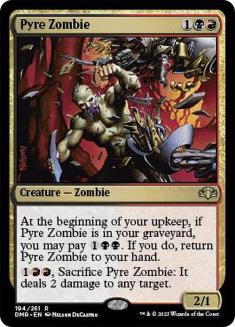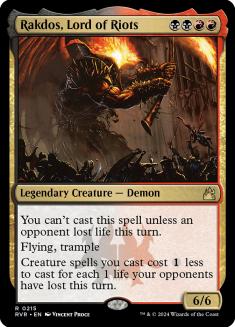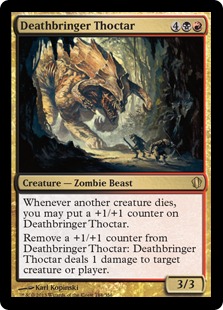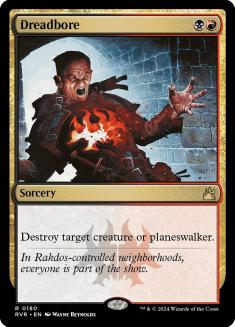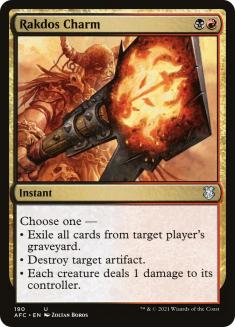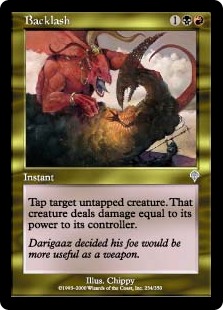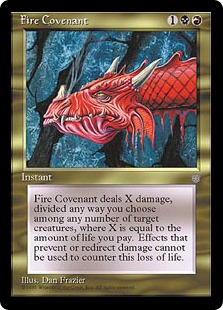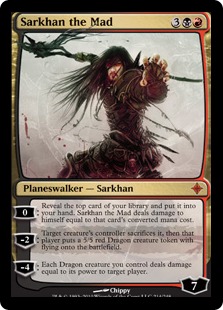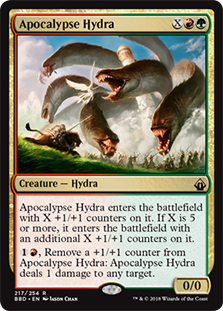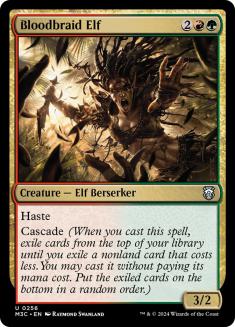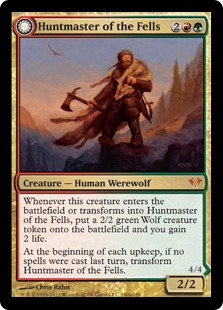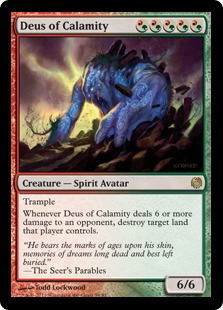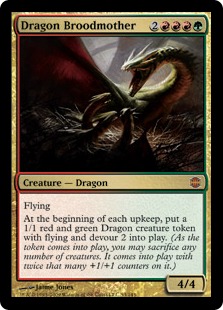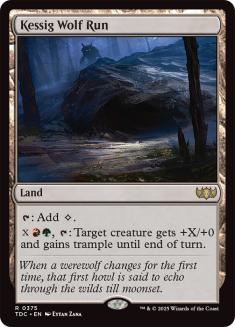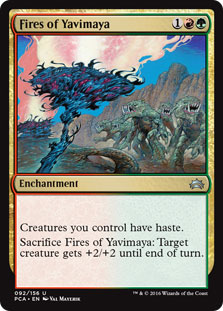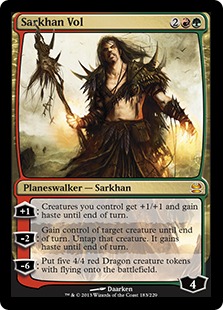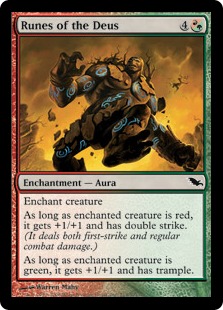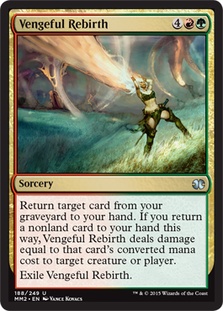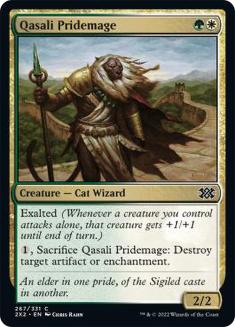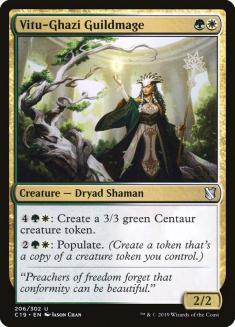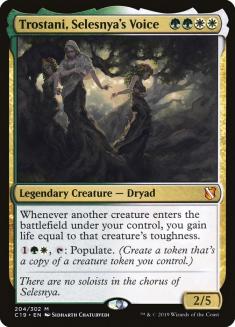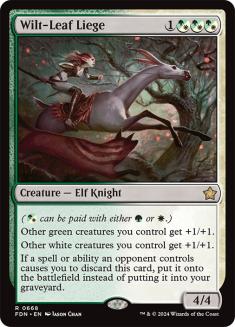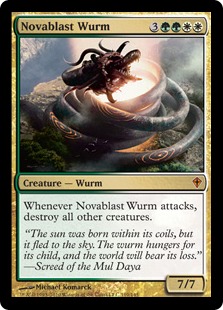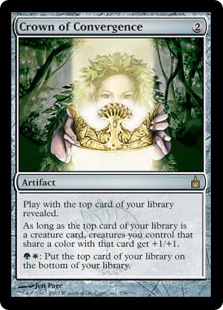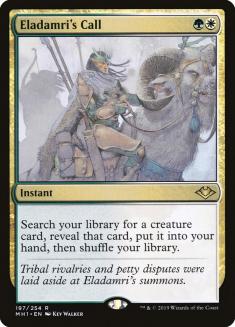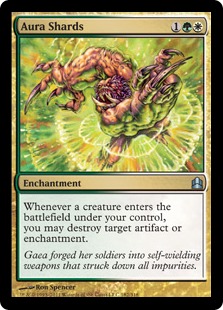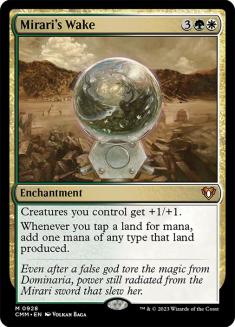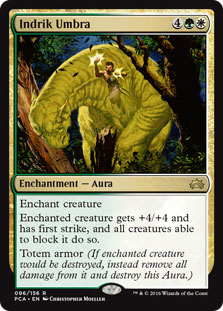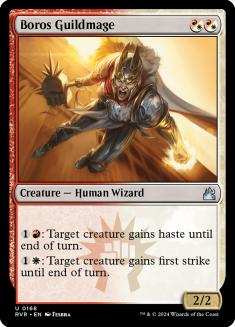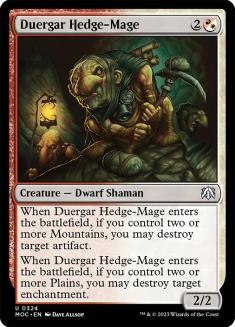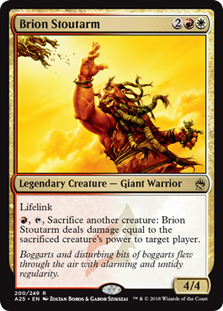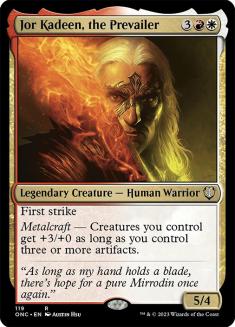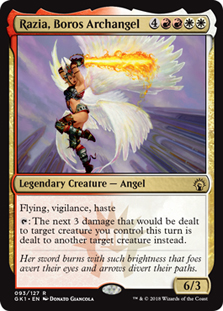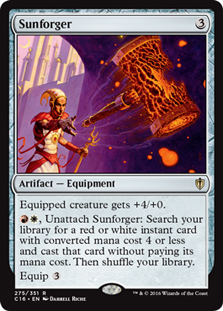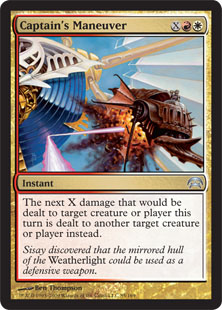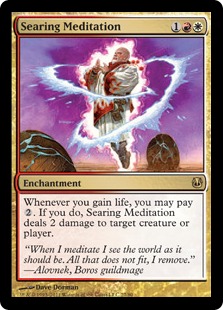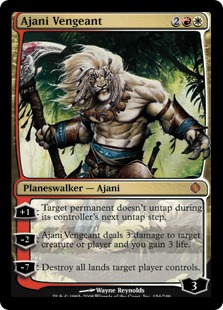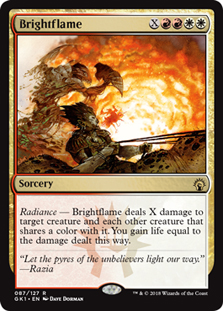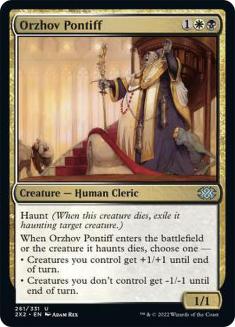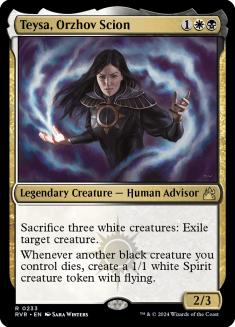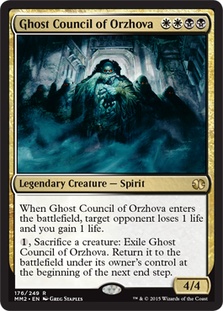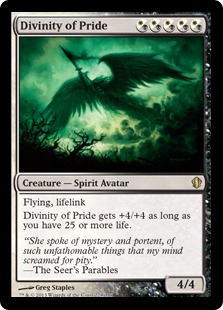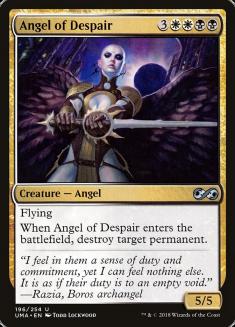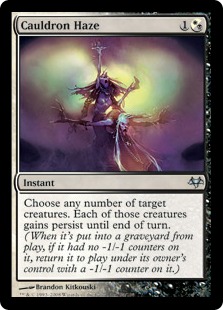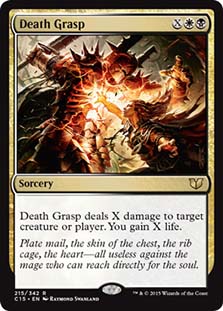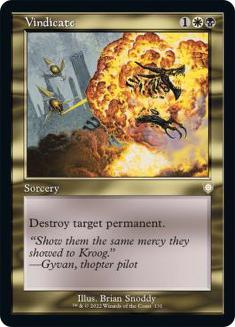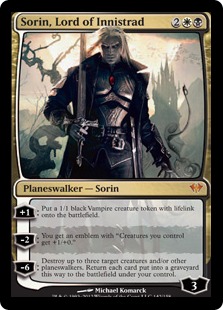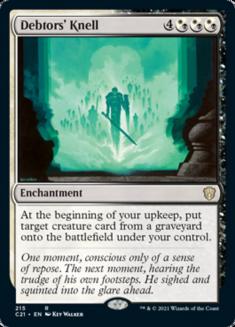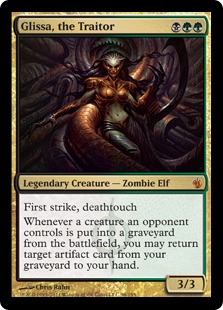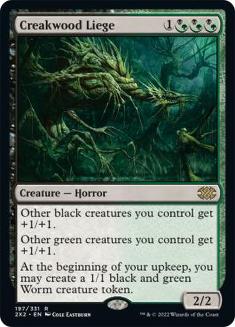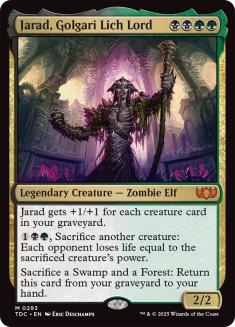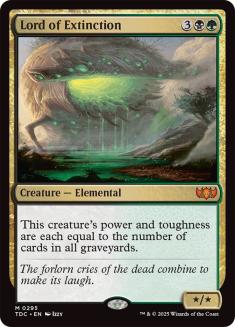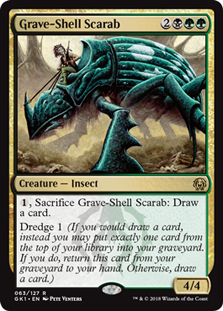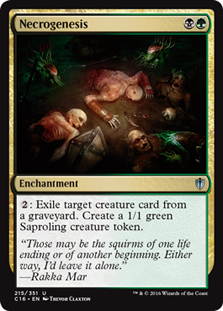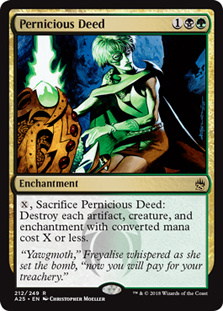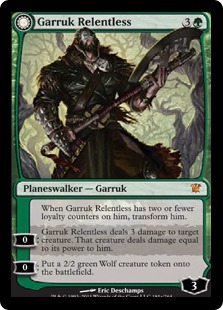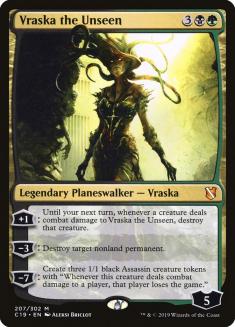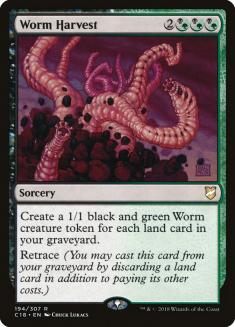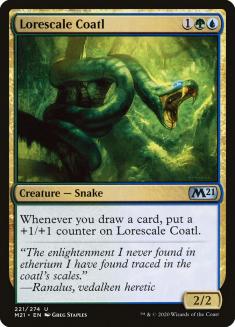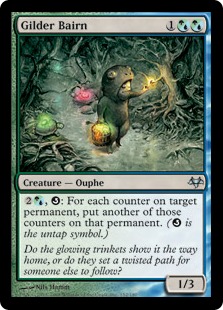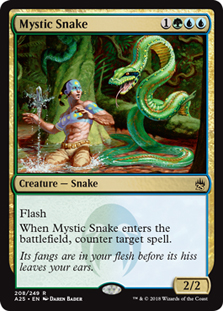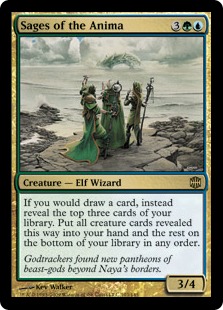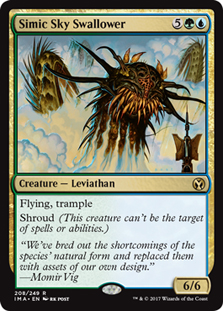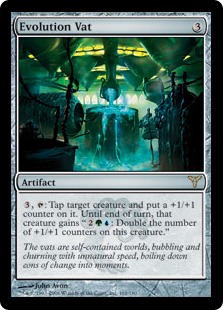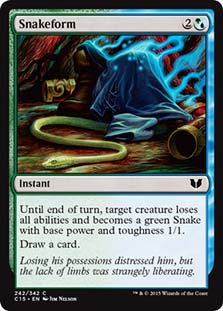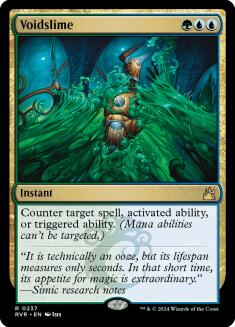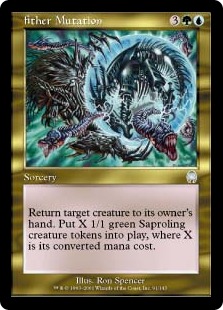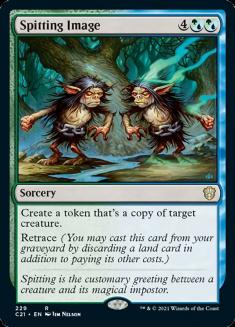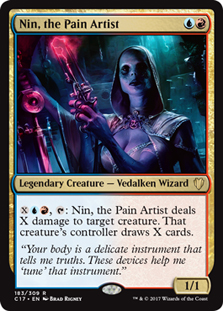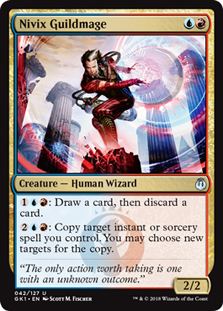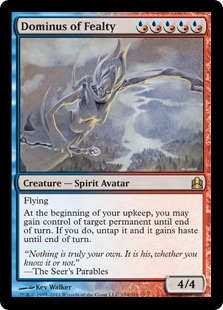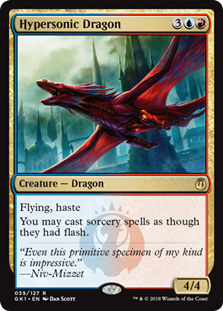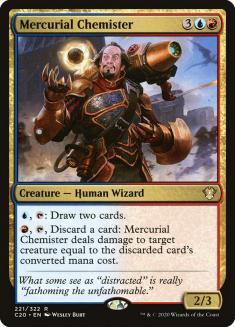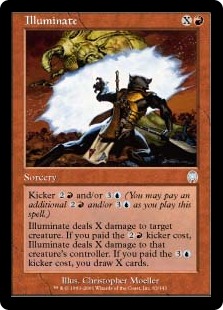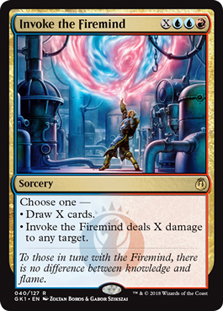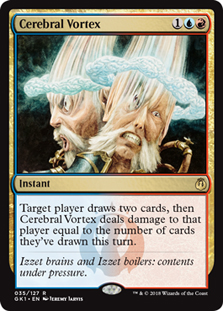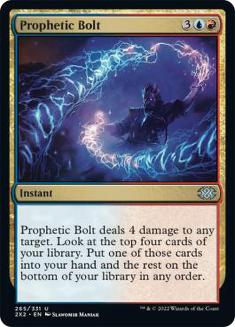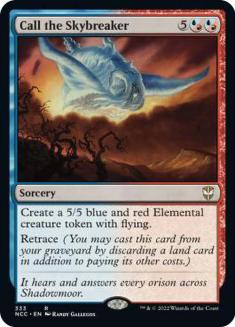Interesting questions yield interesting answers. A few weeks ago, Sheldon said he would be interested in hosting a Commander Invitational , presumably sometime in 2013. The obvious questions that follow are largely logistical—who to invite, how to get them to the same place at the same time—but also happens to tug up against a foundational underpinning of the format.
How would you make sure everyone played fair?
Last week on Dear Azami, Cassidy took a nostalgic look at Intet, the Dreamer, which was his first general back in the day when Commander was still Elder Dragon Highlander. (It was only fair since the week before, I took a nostalgic look back at something myself, a Christmas road-trip to see a long-distance girlfriend back when I was in college. And did so via embracing Livonya Silone…to build a Commander deck for said former girlfriend. ‘Tis the season to wax nostalgic, it appears.) He highlighted the lessons learned in “embracing the chaos” as Sheldon likes to call it, that the point was the fun to be had, not ‘just’ racking up the win, so infinite combos and unbreakable locks are just no fun and not worth pursuing.
Having a “Commander Invitational,” however, brings us up against the competitive / casual barrier once again. After all, presumably the purpose of an Invitational would be to win it, but the challenge in Commander is not breaking the format but instead not breaking the format since there are a number of broken things you could be doing if you wanted to try. Breaking the format is easy, and brushing up against the divide between casual and competitive play ends badly as my now year-long quest to see the banning of Ad Nauseam in Commander showcases.
Though in Ad Nauseam’s case, I specifically see it as broken because it is not part of a two-card combo but is in and of itself a one-card combo: cast Ad Nauseam, win, period. It’s so easy, in fact, that when the Gold Rush packets were announced by StarCityGames.com for Grand Prix Charlotte, I suddenly considered traveling that weekend… Not to play in the Grand Prix, but because winning a Gold Rush envelope was listed as a prize for winning a four-man Commander queue. With that incentive on the line, the crazy decision seemed not to be to buy a plane ticket but to figure out how to borrow an Imperial Seal and Grim Tutor to go The Full Broken in the most high-powered version of the deck possible.
The Commander banned list contains the most egregious offenders, the things that break or warp the format by their existence alone. We can all agree Upheaval would be no fun for anyone except maybe its caster, but even then that’s not guaranteed because crippling people just so you can easily kill them is nowhere near as enjoyable in the game of Magic: The Gathering as it sounds. But “no infinite combos” is not listed on the banned list, so a difficult aspect of putting together a Commander Invitational worth live streaming for the Commander community to watch might come down to “is the game decided on turn 4 by Tooth and Nail?” There are too many to ban, so the ban must come in your head…or must it?
In seeking a way around having to formally write out the “social contract” of the format and then make sure we’re all accurately interpreting each other’s’ perceptions of what that means, it occurred to me that there is a fix for that—there’s more than one way to narrow a card pool than by banning 50 or 100 cards. You can ban everything that’s not in a cube then build only out of the cube either by yourself when you call that “your Commander big box o’ cards” (mine doesn’t even have a Tooth and Nail in it, though it does have six copies of Winding Canyons) or via drafting the cube. This realization was helped along by drafting the high-powered Holiday Cube on Magic Online when I had an absurd amount of fun drafting the following deck and wishing I could play it more than the three rounds I won with it:
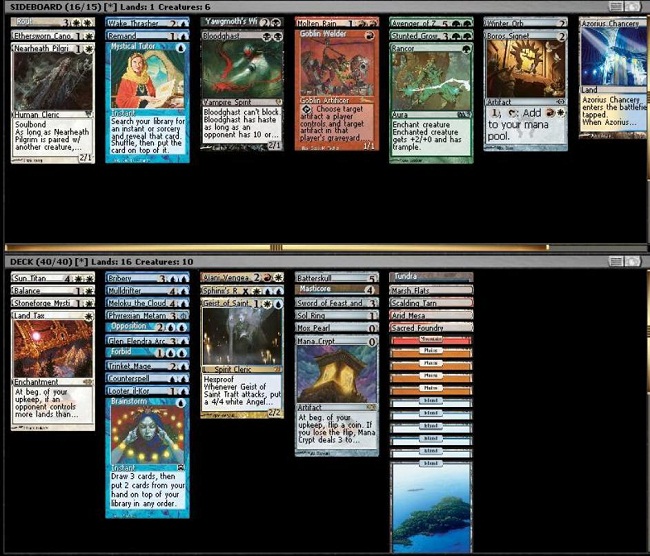
You don’t have to police anyone’s deckbuilding decisions when you instead define which cards are playable in the format to the minutest detail. The questions then became “what would that look like?” and “how would you do it?” In pursuing that line of thought, I decided to treat it as an interesting theoretical problem before I realized that when it comes to Commander, Sheldon seems to have everything, and thus I would be building a cube not with the intention of acquiring it myself to own and play with but instead building it for Sheldon to put together, specifically for the purpose of hosting a Magic Invitational as he said he seemed interested in doing.
Which means the answer to “what would it look like?” was the same as any cube, with no card restrictions save that we wanted to be including the kinds of cards that are good in Commander, price no object and the sky’s the limit. We want to budget our fun, not our pocketbooks, so I don’t have to do the worst possible cop-out and not include the original dual lands because they’re expensive and I don’t have most of them.
That leaves us just “how would you do it?” The question was an interesting one, and I sought out an elegant solution. This solution has the advantage of being highly customizable and able to change the flavor and dynamics of the cube with very little work comparatively; changing which Commanders represent a color combination can switch color balances around in and of itself, and if things are feeling a little stale in the games you could switch the Commander pool and liven things up again. This seemed to require that the commanders be a limited pool and be drafted separately, and following that thought process I wanted to figure out what “the rules” are cognizant of the fact that they need to take a minimalist’s approach and be as easy to understand as possible for Commander players.
The point of the Commander Cube is to enable happy fun times with a distinctive sampling of the Commander format, not to breed a new and distinctive offshoot of the format that will be its own separate thing. We don’t want to create a new format, just a new way to play it when people are crossing over from playgroup to playgroup, as sixteen players coming from all over to play a Commander Invitational would be coming from sixteen different playgroups with their own distinctive nuances and styles and that intermixing is where barriers to fun start being erected when Niv-Mizzet gets curious and everyone gets unhappy then dead.
First let’s meet the Commanders, and then we’ll explain something more about “the rules.”
That’s one each for all five colors by themselves, one each for each two-color combination, and one each for each three-color combination. We also include five five-color commanders because them being fairly plentiful will help balance out the draft and make things easier. The commanders are drafted separately and the rules following them are simply understood by putting them in different colored sleeves from the rest of the Cube. A commander can only be a commander. You can’t draft a Sliver Queen and Progenitus and then decide to play one as your commander and put the other in your deck, nor can you play any legendary creature drafted from the rest of the cube as your commander.
Color identity rules will apply, which is why it is important to have five-color commanders be plentiful in the pool. They help avoid train wrecks where one player gets cut off hard during the draft and doesn’t end up with a playable deck by giving backup plans where you can take anything and be able to play it. It’s also important to make sure that never happens by giving people more than one to work with during the draft, though you do not want to have too many as that will mean there is no such thing as signaling and settling into colors because there are too many options.
Ideally, you’d have an interesting interplay during the draft by having a really awesome mono-colored Commander—let’s say Azami, Lady of Scrolls because this article series is named after her—but also have an exit route planned out in case the draft or the packs don’t go quite in your favor with a two- or three-color option to expand into (say Oona, Queen of the Fae or Maelstrom Wanderer) and a five-color commander if you have to hit the panic button and cobble something together after the fact out of whatever you were able to pick up. (Progenitus is good like that—he’s awesome at the top of any curve.)
Commander games are best at four players, and the Magic Invitational used to invite sixteen players, so it stands to reason the Commander Invitational would also seek to invite sixteen, implying that games of four are the ideal size for Commander games with this cube when we design the rules of its use around it. For a game of four, you would pull all thirty Commanders out and shuffle them up til they’re good and random, and each player would put together a single pack of five Commanders, taking the other ten and putting them back in the Cube without anyone looking at them to see who’s not available.
Then they’d draft their Commanders: their first pick out of five possible Commanders, and you pass the pack to your left. Second pick is out of four possible Commanders with one player having had their option already, then you pass to your left, and third pick is out of three possible Commanders with two players having already selected from the pack. After the third pick, each player has three Commanders to work with and build both a deck and a draft strategy around, and you put the remaining eight unloved Commanders back in the cube. If everyone had five to work with, there might not be any strategy to the draft at all, so we limit ourselves to three and picking the twelve greatest hits out of these thirty without every one being available every time.
Then we begin the draft. We want this to be as much like Commander in the real world as possible since we’re using this as a means to keep games interesting and balanced rather than as a replacement to the existing format—this is an overlay on top of it rather than a separate thing. This means a few things will be true by definition:
- This is a highlander format. Every card besides basic lands and Relentless Rats is restricted to one copy per deck. Since we’re playing Cube, that’s solved by only including one of anything in the cube, so this rule is covered easily. (Yes, we’re aware of the Relentless Rats workaround; no, we’re not including any.)
- The official Commander banned list is in effect. This is also easily answered by the cube: if it’s banned, just don’t include it. If it’s banned as a commander but eligible for play in your deck, just don’t include it as a commander. You’ll note Rofellos was not included as a commander, but this doesn’t preclude us from listing it in the cube because we’ve noted that cards drafted in the cube can’t be advanced to commander status as a definition of the rules of the cube. (Different colored sleeves handles this easily because I have never once seen a cube that wasn’t in sleeves.)
- Color identities apply. This one is the hard one since you can draft anything you want to but can only play it in the end based on whether it works in your final product Commander deck. We’ll use the same definition and restrictions as in the official Commander format rules, so if you’re running short on playables for your Kiki-Jiki deck and would be perfectly happy to play Sunforger just as a piece of equipment that is a double-Bonesplitter, unfortunately you cannot. This is going to be a rough restriction, and it means we’re going to have to build the skeletal structure for the cube with this in mind, as it may be especially hard to end up with a mono-colored deck if too much of the cube is off-limits to you; we do want mono-colored commanders to be at least a sometimes option. We help advance this by having five badass Commanders in the mono-colored slots, but we’re going to have to keep a reasonable proportion of cards accessible to mono-colored players, which will affect how we build the cube for color balance.
With that said, the logistics of the cube start to suggest themselves, but we need to answer the question of what a Commander Cube pack will look like. T presumed structure of the Invitational will cover that. We’re building more than 40-card decks presumably, with the tension being between hitting the ‘official’ deck size of 99 +1 commander and the fact that a draft that goes too long will get boring.
My ideal fix to this was setting the deck size at 60 +1 commander and the packs to four packs of fifteen cards each, with the interesting effect that by making it four packs instead of three you balance out which of your neighbors you have to cooperate with via signaling and take into account during the draft portion. With three packs there is an imbalance in the power dynamic between you and the person to your left, as they are only able to impact your draft for one-third of the time while the person to your right affects you for the other two-thirds, meaning it’s harder for them to punish you if you signal poorly and easier for them to end up with a bad deck without having an equal opportunity to strike back at your card pool.
That said, three packs of 20 will let you see the same number of cards while preserving the traditional draft relationships dynamic, and five packs of fifteen (if we’re married to the fifteen-card pack but not necessarily to the sixty-card deck) preserves most of that dynamic while shifting the amount of time you are being passed to by the person to your left to 2/5ths rather than 1/3rd.
I built a skeleton framework for the Cube’s color balance when I realized that mono-colored decks being viable required them to have a second ‘color’ to pool from: artifacts. While the Holiday Cube had plenty of artifacts, many of them were Moxes or Signets or cards that otherwise have a color identity to them, and for the purposes of this cube we would treat any such cards as mono-colored or multicolored cards of the appropriate designation rather than bundling them up as “artifacts” and assuming the balance will work out right. I did some math comparing color balance to other cubes and came up with the following balance based on a cube size of 1,000 cards.
Why 1,000? A cube of 1,000 cards can support drafts of the size we’ve noted for eight players at a time, meaning that we could have two pods of four playing at any given time. Of the sixteen players in the Invitational, that gives us a 1:1 matchup of player versus coverage writer, and we could switch players from each role in order to provide a proper amount of coverage support during both the draft and the game play. A cube of one thousand plus not just one but two pools of commanders can run two four-man pods at a time and allows us to act as our own coverage staff rather than somehow relying on a large number of people outside of the event’s players itself for presenting the Commander Invitational to those who would be interested in watching it from home.
It would be ideal to be able to broadcast the games being played live as well, but this is far easier and more realistic if we begin with the assumption that we’re not there to be coddled, we’re going to do most of the work ourselves—which means a cube size that allows half the players to draft from it without every card being in every pack every time in one or the other game, but not more than that because every card we add dilutes from getting to play our favorite cards.
Lands: 50 (5%)
Artifacts: 150 (15%)
Mono-Colored: 125 per color (12.5%)
Gold: 175 (17.5%)
Gold cards need to be broken down evenly, and we note that we have two-colored, three-colored, and five-colored options. Sorry, Nephilim, it appears we will be leaving you behind. Additionally, it wouldn’t be surprising for a player to have a two-color commander and a three-color commander that overlaps with two colors, but even if you don’t a W/U card is still a gold card that a W/U/B commander can play in their deck, so we want to bias in favor of the two-color options as they will be more accessible to more people, so we don’t need to have an exact balance within the gold cards.
Two-Colored Gold Cards: 10 Per Two-Color Combination (100 total; 10%)
Three-Colored Gold Cards: 7 Per Three-Color Combination (70 total; 7%)
Five-Color Gold Cards: 5 total (0.5%)
We’ll begin with the lands:
Next we have the gold cards:
Esper:
Jund:
Naya:
Bant:
Ceta (RUG):
Dega (W/B/R):
Ana (BUG):
Raka (R/W/U):
Necra (B/G/W):
Azorius:
Dimir:
Rakdos:
Gruul:
Selesnya:
Boros:
Golgari:
Simic:
Izzet:
That’s a lot of information, but we’re less than a quarter of the way through the cube. We’re now going over card pools that are just too large to chop into graphics, so here’s the card lists for the five colors plus artifacts. Artifacts are up first:
Artifacts
Colorless:
Kozilek, Butcher of Truth, Ulamog, the Infinite Gyre, It That Betrays, Artisan of Kozilek, All Is Dust, Karn Liberated
Artifact Creatures:
Arcbound Reclaimer, Bronze Bombshell, Crenellated Wall, Galvanic Juggernaut, Junktroller, Masticore, Molten-Tail Masticore, Rackling, Viceling, Rustspore Ram, Silent Arbiter, Clone Shell, Stuffy Doll, Kuldotha Forgemaster, Manor Gargoyle, Precursor Golem, Psychosis Crawler, Thopter Assembly, Darksteel Colossus, Myr Battlesphere, Platinum Angel, Duplicant, Solemn Simulacrum, Steel Hellkite, Wurmcoil Engine, Scarecrone, Etched Oracle, Mindless Automaton, Lodestone Golem, Karn, Silver Golem, Pentavus, Triseklavus, Triskelion, Mycosynth Golem, Draco, Epochrasite, Junk Diver, Phyrexian Revoker, Steel Overseer, Adaptive Automaton, Su-Chi, Etched Champion, Myr Propagator, Shimmer Myr, Grid Monitor, Arcbound Crusher
Equipment:
Basilisk Collar, Umezawa’s Jitte, Batterskull, Bonehoard, Sword of Fire and Ice, Sword of Feast and Famine, Sword of Light and Shadow, Skullclamp, Nim Deathmantle, Argentum Armor, Lightning Greaves, Swiftfoot Boots, Blade of the Bloodchief, Champion’s Helm, Whispersilk Cloak, Darksteel Plate, Sigil of Distinction, O-Naginata, Slagwurm Armor, Mortarpod, Runechanter’s Pike,
Thornbite Staff, Loxodon Warhammer, Obsidian Battle-Axe, Umbral Mantle
Ramp:
Mana Crypt, Everflowing Chalice, Sol Ring, Mana Vault, Expedition Map, Wayfarer’s Bauble, Grim Monolith, Mind Stone, Coldsteel Heart, Armillary Sphere, Journeyer’s Kite, Fellwar Stone, Manakin, Millikin, Prophetic Prism, Coalition Relic, Darksteel Ingot, Worn Powerstone, Pilgrim’s Eye, Scuttlemutt, Palladium Myr, Thran Dynamo, Khalni Gem, Gilded Lotus, Dreamstone Hedron
Artifacts:
Akroma’s Memorial, Altar of Dementia, Caged Sun, Citanul Flute, Codex Shredder, Contagion Engine, Crystal Ball, Culling Dais, Elixir of Immortality, Erratic Portal, Forcefield, Gauntlet of Power, Grimoire of the Dead, Helm of Awakening, Helm of Possession, Helvault, Icy Manipulator, Iron Maiden, Jester’s Mask, Lifeline, Magnetic Web, Memory Jar, Mimic Vat, Mindcrank, Mind’s Eye, Mindslaver, Muse Vessel, Nevinyrral’s Disk, Oblivion Stone, Portcullis, Predator, Flagship, Reito Lantern, Relic of Progenitus, Rings of Brighthearth, Scroll Rack, Scrying Glass, Seer’s Sundial, Sensei’s Divining Top, Slate of Ancestry, Spawning Pit, Staff of Nin, Sundial of the Infinite, Temple Bell, Temporal Aperture, Thousand-Year Elixir, Trading Post, Vedalken Orrery, Well of Lost Dreams
White
Artifacts:
Scourglass, Dispeller’s Capsule, Scepter of Dominance, Norn’s Annex
Planeswalkers:
Elspeth, Knight-Errant, Gideon Jura
Enchantments:
Land Tax, Cho-Manno’s Blessing, Daybreak Coronet, Luminarch Ascension, Cage of Hands, Crackdown, Story Circle, Oblivion Ring, Aura of Silence, Leyline of Sanctity, Marshal’s Anthem, Faith’s Fetters, Cathars’ Crusade, Martyr’s Bond, True Conviction
Sorceries:
Steelshaper’s Gift, Martial Coup, Tariff, Entreat the Angels, Idyllic Tutor, Survival Cache, Armageddon, Wrath of God, Decree of Justice, Replenish, Evangelize, Increasing Devotion, Rout, Three Dreams, Winds of Rath, Akroma’s Vengeance, Austere Command, Terminus, Chronomantic Escape, Feudkiller’s Verdict, Open the Vaults, Phyrexian Rebirth, Mass Calcify, Archangel’s Light, Soulscour, Storm Herd
Instants:
Swords to Plowshares, Path to Exile, Condemn, Angel’s Grace, Divine Deflection, Enlightened Tutor, Hail of Arrows, Abeyance, Temper, Oblation, Pulse of the Fields, White Sun’s Zenith, Faith’s Reward, Reverent Mantra, Return to Dust, Miraculous Recovery, Swell of Courage
Creatures:
Weathered Wayfarer, Mother of Runes, Mikaeus, the Lunarch, Serra Ascendant, Suture Priest, Stoneforge Mystic, Eight-and-a-Half-Tails, Ethersworn Canonist, Jotun Grunt, Leonin Relic-Warder, Puresteel Paladin, Wall of Omens, Argivian Archeologist, Preacher, Aven Mindcensor, Cloudchaser Kestrel, Fiend Hunter, Gideon’s Avenger, Intrepid Hero, Kor Sanctifiers, Mangara of Corondor, Mirror Entity, Silverblade Paladin, Stonecloaker, Transcendent Master, Academy Rector, Sanctum Gargoyle, Angel of Jubilation, Linvala, Keeper of Silence, Auriok Salvagers, Azorius Justiciar, Magus of the Disk, Magus of the Tabernacle, Restoration Angel, Rhox Faithmender, Seht’s Tiger, Sublime Archangel, Windborn Muse, Archon of Justice, Baneslayer Angel, Stonehewer Giant, Blinding Angel, Karmic Guide, Adarkar Valkyrie, Sun Titan, Admonition Angel, Crovax, Ascendant Hero, Oathsworn Giant, Sunblast Angel, Twilight Shepherd, Yosei, the Morning Star, Angel of Serenity, Arbiter of Knollridge, Elesh Norn, Grand Cenobite, Vengeful Archon, Windbrisk Raptor, Akroma, Angel of Wrath, Myojin of Cleansing Fire, Blazing Archon, Iona, Shield of Emeria, Reya Dawnbringer
Green
Artifacts:
None
Planeswalkers:
Garruk Wildspeaker, Garruk, Primal Hunter
Enchantments:
Concordant Crossroads, Mirri’s Guile, Ground Seal, Lignify, Oath of Druids, Sylvan Library, Survival of the Fittest, Enchantress’s Presence, Fecundity, Rites of Flourishing, Vow of Wildness, Beastmaster Ascension, Bear Umbra, Defense of the Heart, Greater Good, Doubling Season, Asceticism, Lurking Predators
Sorceries:
Wurmcalling, Green Sun’s Zenith, Regrowth, Genesis Wave, Harmonize, All Suns’ Dawn, Natural Order, Bramblecrush, Beacon of Creation, Increasing Savagery, Restock, Primal Command, Plow Under, Overrun, Desert Twister, Tooth and Nail, Praetor’s Council, Decree of Savagery
Instants:
Worldly Tutor, Berserk, Constant Mists, Sprout Swarm, Strength of the Tajuru, Beast Within, Krosan Grip, Chord of Calling, Momentous Fall, Stonewood Invocation, Reach of Brambles, Rude Awakening
Mana Ramp:
Birds of Paradise, Joraga Treespeaker, Veteran Explorer, Sakura-Tribe Elder, Rofellos, Llanowar Emissary, Wood Elves, Fertilid, Yavimaya Elder, Yavimaya Granger, Azuza, Lost but Seeking, Oracle of Mul Daya, Abundant Growth, Lay of the Land, Rampant Growth, Explore, Fertile Ground, Prismatic Omen, Harrow, Recross the Paths, Cultivate, Kodama’s Reach, Druid’s Repository, Overgrowth, Explosive Vegetation, Mana Reflection
Creatures:
Essence Warden, Scute Mob, Ulvenwald Tracker, Ambush Viper, Argothian Enchantress, Fauna Shaman, Kazandu Tuskcaller, Nightshade Peddler, Scavenging Ooze, Viridian Zealot, Wall of Blossoms, Aura Gnarlid, Champion of Lambholt, Eternal Witness, Fierce Empath, Imperious Perfect, Loaming Shaman, Ohran Viper, Spawnwrithe, Troll Ascetic, Yeva, Nature’s Herald, Briarhorn, Brooding Saurian, Chameleon Colossus, Forgotten Ancient, Masked Admirers, Spike Weaver, Thrun, the Last Troll, Ant Queen, Genesis, Ageless Entity, Golgari Grave-Troll, Seedborn Muse, Thragtusk, Wolfir Silverheart, Deadwood Treefolk, Essence of the Wild, Kamahl, Fist of Krosa, Soul of the Harvest, Vigor, Avenger of Zendikar, Garruk’s Horde, Hornet Queen, Pelakka Wurm, Regal Force, Craterhoof Behemoth, Terastodon, Vorinclex, Voice of Hunger, Woodfall Primus, Myojin of Life’s Web
Red
Artifacts:
Planeswalkers:
Enchantments:
Goblin Bombardment, Raging River, Smoke, Dragon Breath, Aggravated Assault, Electropotence, Invasion Plans, Planeswalker’s Fury, Sulfuric Vortex, Vow of Lightning, Mana Echoes, Pyrohemia, Sneak Attack, Curse of Bloodletting, Mindmoil, Vicious Shadows
Sorceries:
Banefire, Bonfire of the Damned, Devastating Summons, Devil’s Play, Faithless Looting, Gamble, Boom / Bust, Fanning the Flames, Haze of Rage, Mizzium Mortars, Molten Disaster, Recoup, Heat Shimmer, Thunderblade Charge, Wheel of Fortune, Aftershock, Burn at the Stake, Ignite Memories, Mass Mutiny, Wake of Destruction, Disaster Radius, Thieves’ Auction, Alpha Brawl, Insurrection, Obliterate, Blasphemous Act, Warp World
Instants:
Dead/Gone, Comet Storm, Starstorm, Shattering Pulse, Sudden Shock, Chaos Warp, Fatal Frenzy, Forge[/author]“]Pulse of the [author name="Forge"]Forge[/author], Reiterate, Urza’s Rage, Grab the Reins, Wild Ricochet, Fissure, Savage Beating, Word of Seizing
Creatures:
Martyr of Ashes, Dragonmaster Outcast, Goblin Bushwhacker, Goblin Welder, Slumbering Dragon, Slag Fiend, Warbreak Trumpeter, Ashling the Pilgrim, Bazaar Trader, Crimson Mage, Kargan Dragonlord, Lightning Mauler, Molten Hydra, Orcish Settlers, Stigma Lasher, Adamaro, First to Desire, Arms Dealer, Squee, Goblin Nabob, Countryside Crusher, Goblin Matron, Goblin Sharpshooter, Jaya Ballard, Task Mage, Inner-Flame Igniter, Manic Vandal, Sensation Gorger, Spikeshot Goblin, Starke of Rath, Taurean Mauler, Viashino Heretic, Zo-Zu the Punisher, Cyclops Gladiator, Flametongue Kavu, Fumiko the Lowblood, Hellrider, Ib Halfheart, Goblin Tactician, Krenko, Mob Boss, Obsidian Fireheart, Oxidda Scrapmelter, Rakka Mar, Deathforge Shaman, Emrakul’s Hatcher, Fortune Thief, Furystoke Giant, Hoarding Dragon, Kazuul, Tyrant of the Cliffs, Kumano, Master Yamabushi, Malignus, Mindclaw Shaman, Siege-Gang Commander, Zealous Conscripts, Crater Hellion, Inferno Titan, Godo, Bandit Warlord, Hellkite Charger, Moonveil Dragon, Balefire Dragon, Forge[/author]“]Chancellor of the [author name="Forge"]Forge[/author], Hamletback Goliath, Hateflayer, Stalking Vengeance, Bogardan Hellkite, Scourge of Kher Ridges, Bosh, Iron Golem, Furnace Dragon, Akroma, Angel of Fury
Black
Artifacts:
Elbrus, the Binding Blade, Nihil Spellbomb, Cranial Plating, Executioner’s Capsule
Planeswalkers:
Liliana of the Veil, Liliana Vess, Sorin Markov
Enchantments:
Bloodchief Ascension, Phyrexian Reclamation, Animate Dead, Bitterblossom, Gate to Phyrexia, Oversold Cemetery, Attrition, Necromancy, Necropotence, Oubliette, Phyrexian Arena, Underworld Connections, Diabolic Servitude, Grave Pact, Leyline of the Void, Exquisite Blood, Painful Quandary, Enslave, Grave Betrayal
Sorceries:
Innocent Blood, Killing Wave, Reanimate, Shrouded Lore, Chainer’s Edict, Demonic Tutor, Exsanguinate, Profane Command, Buried Alive, Praetor’s Grasp, Yawgmoth’s Will, Barter in Blood, Damnation, Diabolic Tutor, Nightmare Void, Ritual of the Machine, Syphon Mind, Beacon of Unrest, Dregs of Sorrow, Increasing Ambition, Living Death, Promise of Power, Hex, Life’s Finale, Phthisis, Decree of Pain, Plague Wind
Instants:
Slaughter Pact, Skeletal Scrying, Vampiric Tutor, Grim Harvest, Imp’s Mischief, Sickening Shoal, Corpse Dance, Kor Dirge, Murder, Sudden Spoiling, Makeshift Mannequin, Treacherous Urge, Betrayal of Flesh, Murderous Spoils
Creatures:
Carrion Feeder, Guul Draz Assassin, Viscera Seer, Abyssal Gatekeeper, Blood Artist, Nether Traitor, Golgari Thug, Keeper of the Dead, Nezumi Shortfang, Nezumi Graverobber, Gatekeeper of Malakir, Big Game Hunter, Bloodhusk Ritualist, Bone Shredder, Cemetery Reaper, Coffin Queen, Dark Impostor, Doomed Necromancer, Fleshbag Marauder, Garza’s Assassin, Maga, Traitor to Mortals, Stronghold Assassin, Undead Gladiator, Urborg Syphon-Mage, Abyssal Persecutor, Ashling, the Extinguisher, Balthor the Defiled, Bane of the Living, Bloodline Keeper, Disciple of Bolas, Entomber Exarch, Graveborn Muse, Necrotic Ooze, Sangromancer, Bloodgift Demon, Chainer, Dementia Master, Corpse Connoisseur, Endrek Sahr, Master Breeder, Kagemaro, First to Suffer, Puppeteer Clique, Shriekmaw, Thrashing Wumpus, Grave Titan, Kokusho, the Evening Star, Salvage Titan, Dread, Harvester of Souls, Massacre Wurm, Netherborn Phalanx, Nirkana Revenant, Reaper from the Abyss, Visara the Dreadful, Xathrid Demon, Butcher of Malakir, Rune-Scarred Demon, Sheoldred, Whispering One, Myojin of Night’s Reach, Dread Cacodemon
Blue
Artifacts:
Aether Spellbomb, Courier’s Capsule, Proteus Staff
Planeswalkers:
Jace Beleren, Jace, the Mind Sculptor, Tezzeret the Seeker
Enchantments:
Flood, Mark of Eviction, Mystic Remora, Soothsaying, Carry Away, Eel Umbra, Homarid Spawning Bed, Psychic Surgery, Steal Enchantment, Rhystic Study, Copy Enchantment, Equilibrium, Pemmin’s Aura, Collective Restraint, Opposition, Leyline of Anticipation, Curse of Echoes, Treachery, Future Sight, Spellweaver Volute, Back from the Brink, Day of the Dragons
Sorceries:
Increasing Confusion, Mystic Speculation, Preordain, Compulsive Research, Exhaustion, Deep Analysis, Rite of Replication, Foresee, Wash Out, Acquire, Allied Strategies, Bribery, Devastation Tide, Fathom Trawl, Time Warp, Mass Polymorph, Blatant Thievery, Beacon of Tomorrows, Time Stretch
Instants:
Brainstorm, Blustersquall, Gigadrowse, Mystical Tutor, Pongify, Quicken, Read the Runes, Spell Burst, Arcane Denial, Aura Graft, Cyclonic Rift, Counterspell, Into the Roil, Mana Drain, Trickbind, Capsize, Dominate, Hinder, Spell Crumple, Thirst for Knowledge, Cryptic Command, Fact or Fiction, Reins of Power, Desertion, Time Stop, Gather Specimens, Overwhelming Intellect, Spelljack
Creatures:
Drowned Rusalka, Jace’s Phantasm, Martyr of Frost, Amoeboid Changeling, Snapcaster Mage, Azure Mage, Gilded Drake, Jushi Apprentice, Lighthouse Chronologist, Phantasmal Image, Vedalken Aethermage, Void Stalker, Ambassador Laquatus, Aether Adept, Esperzoa, Master of Etherium, Callous Oppressor, Galvanic Alchemist, Grand Architect, Kira, Great Glass-Spinner, Patron Wizard, Thada Adel, Acquisitor, Trinket Mage, Treasure Mage, Vendilion Clique, Aura Thief, Master Transmuter, Phyrexian Metamorph, Venser, Shaper Savant, Sower of Temptation, Glen Elendra Archmage, Aeon Chronicler, Teferi, Mage of Zhalfir, Meloku, the Clouded Mirror, Chromeshell Crab, Vesuvan Shapeshifter, Ixidron, Mulldrifter, Arcanis the Omnipotent, Keiga, the Tide Star, Consecrated Sphinx, Deadeye Navigator, Draining Whelk, Guile, Chancellor of the Spires, Memnarch, Phyrexian Ingester, Sphinx of Uthuun, Stormtide Leviathan, Deep-Sea Kraken
Putting it all together, we have a thousand-card cube ready for a steady group of Commander players, be they a sixteen-person Commander Invitational or just a dedicated playgroup. Because this is just as customizable as you want it to be, I’ve uploaded the Excel spreadsheet for the cube as well to be pored over in a way that is perhaps easier to read and work with for these large chunks of information. It’s also ready to be altered and customized for anyone who wants to put together a Commander Cube of their own.
Who knows—assuming the restrictions above on commander identity and color identity can be fixed in Magic Online, this could even be a supported format online (as a Phantom Event, just like the regular Cube Drafts are) that helps to bridge the divide between competitive play and hyper-competitive play by bringing everyone onto the same page via an agreed, shared card pool. I for one do not own a Commander deck online anymore; I had to take it apart when Animar stopped being fun because it was just too good at its job, but I would happily fritter tickets away online to play Commander this way. So who knows, there may be a market niche for it yet that will bring it home to everyone, just like how the Magic Online Cube overlapped with 2012’s Magic Player Championships.
It’s my hope that this has been a fun and interesting read to ring in the new year with here at Dear Azami, as well as but the beginning of an interesting and fun way to play Commander that will keep things lively and perhaps enable difficult things like the fair mixing of diverse playgroups in a tournament capacity. After all, Commander does not naturally suit itself very well to a tournament structure because of the inherent profitability of breaking the social contract in pursuit of pure game wins, and drafting tournament decks out of a cube both helps reinforce the social contract and provide a resources limit. The “problem” with tournament Commander, besides being a natural contradiction in terms, is that nothing restrains anyone from going all-out if they want to. But working within a cube can solve that by providing a natural limitation as well by only allowing you to play what you have drafted.
Want to submit a deck for consideration to Dear Azami? We’re always accepting deck submissions to consider for use in a future article, like Josh’s Intet, the Dreamer deck or Tony’s Radha, Heir to Keld deck. Only one deck submission will be chosen per article, but being selected for the next edition of Dear Azami includes not just deck advice but also a $20 coupon to StarCityGames.com!
Email us a deck submission using this link here!
Like what you’ve seen? Feel free to explore more of Dear Azami here! Feel free to follow Sean on Facebook… Sometimes there are extra surprises and bonus content to be found over on his Facebook Fan Page, as well as previews of the next week’s column at the end of the week! Follow Cassidy on his Facebook page here, or check out his Commander blog!

